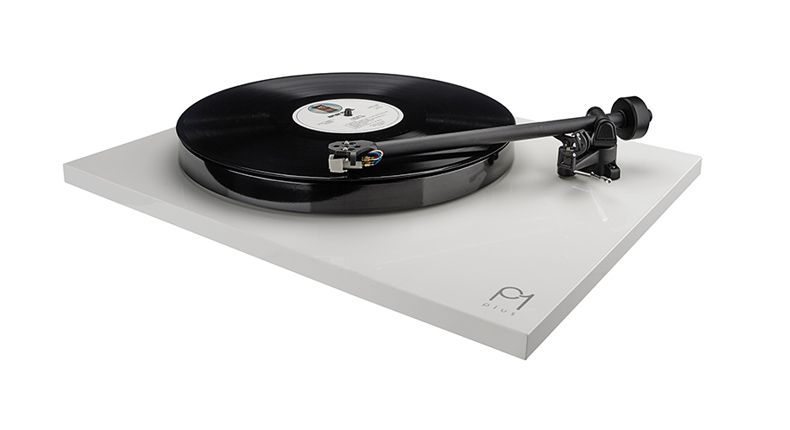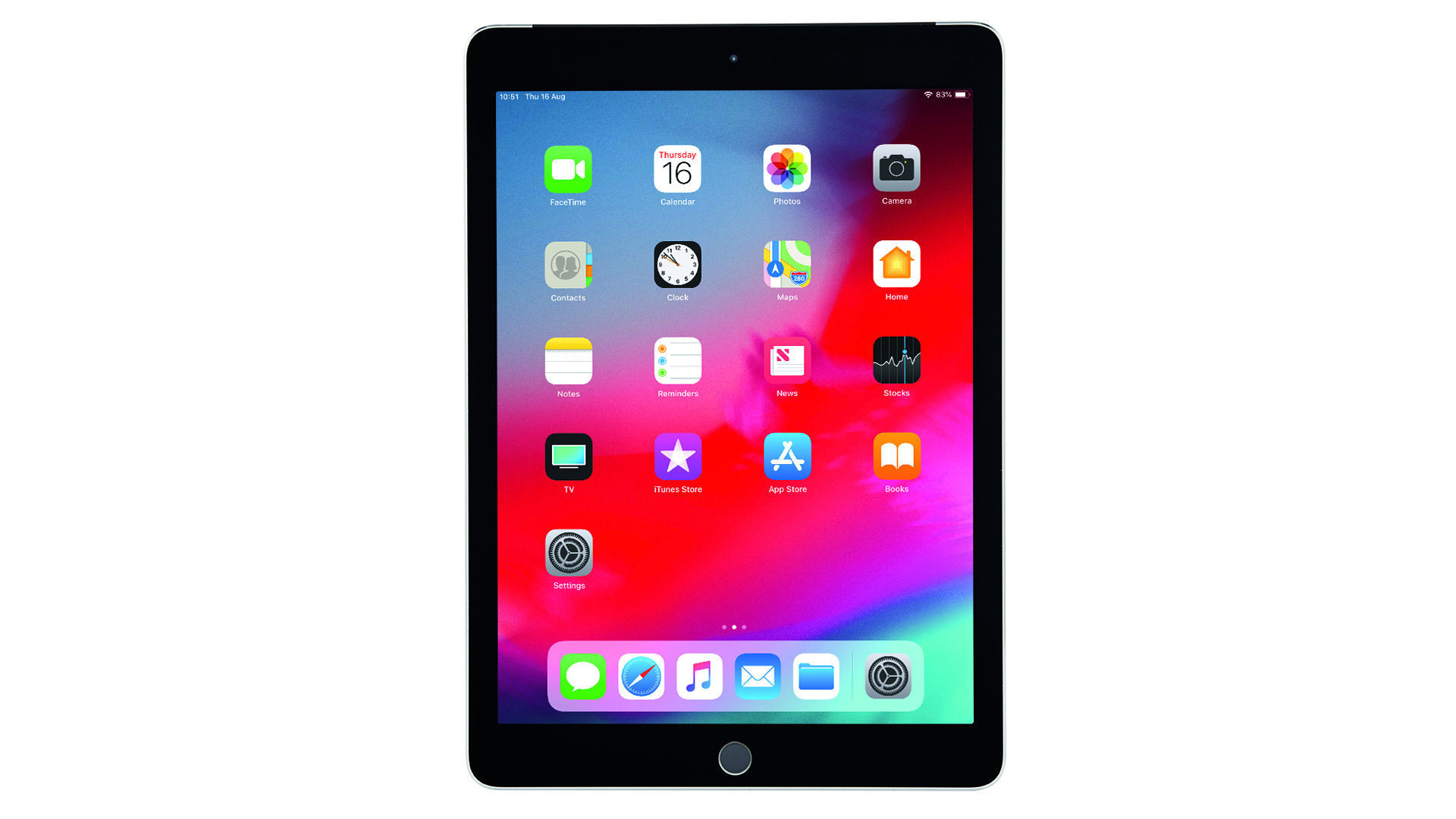Here's a brilliant turntable, tablet and wireless speaker system
A modern hi-fi system fit for 2020

When it comes to putting together a tasty system that truly satisfies your audio appetite, you really need to know which components work well together. But if you feel that knowledge eludes you, don’t worry – we’ve done all the work for you.
In recognition of vinyl’s resurgence, this system is all about playing your records with the minimum amount of extra equipment. If space is at a premium or you just prefer a minimal music system, this modern set-up is ideal: a record player, wireless speaker and a tablet.
Allow us to walk you through this 21st century vinyl system, and just why it works so well.
The system
Turntable: Rega Planar 1 Plus (£329, $595)
Wireless speaker: Naim Muso QB II (£749)
Tablet: Apple iPad Air (£479, $479)
Total: £1557
Now, this really is a system for the third decade of the 21st century. The fact that we can now blend a turntable in with a wireless speaker and drive the whole set-up via a multi-functional tablet – and that it all seems completely normal – is, when you think about it, absolutely staggering.
And yet here we are, in 2020, and the enthusiasm for turntables and listening to vinyl shows no sign of waning – while at the same time, our appetite for convenience in our musical listening also needs to be sated.
Get the What Hi-Fi? Newsletter
The latest hi-fi, home cinema and tech news, reviews, buying advice and deals, direct to your inbox.
This system offers a turntable that will connect to an excellent wireless speaker and so give you the best of both worlds; you can play your vinyl to a pretty high sonic standard, while also not missing out on the likes of Tidal, Spotify and all those other modern methods of sourcing music that we are now taking for granted.

The important part of the name of the Rega deck we have chosen here is the ‘Plus’. The new Planar 1 Plus is essentially a Rega Planar 1 turntable with the Rega Fono Mini A2D phono stage built in. Both are Award-winning products, and Rega says it felt only natural to combine them together. We absolutely agree. And it means that this deck can be connected straight into the Naim Muso Qb II speaker via a 3.5mm jack adaptor cable. (Yes, you need a wire for this bit.)
The overall sound is very similar to a Planar 1 hooked up to an external Fono Mini A2D. While that’s pretty much what we expected, it’s not the whole story. The Planar 1 Plus sounds brilliant. It is rather lean-sounding when played straight out of the box – but the sound comes into its own after a couple of days, becoming more full-bodied and rhythmically exciting the longer you play
Rega has a knack for delivering terrifically agile, subtle and hugely enjoyable dynamics in its products, and the Plus is very much in the same mould.
It’s got the drive, punch and spot-on timing to keep the momentum in any demanding track charging on. It’s also clean and crisp at the same time, with an open, spacious presentation that achieves plenty of separation between instruments and vocals laid out with very little effort. It’s also highly skilled at handling the high frequencies.

The previous iteration of the Mu-so Qb was great, earning five stars when it was first reviewed, but this new version is even better. Outwardly it is similar to the previous model; it’s what happens inside that leads to this wireless speaker becoming so good. Remove the grille and you’ll find a three-way stereo speaker combination with upgraded midrange and bass drive units powered by a total of 300W of amplification.
The single bass driver fires directly forwards, while its pair of tweeters and midrange drivers are angled outwards for wider dispersion and a more spacious soundstage overall.
Inside, if you’re not playing your vinyl records, is Naim’s new streaming platform, which has been developed by the company’s engineers over three years. It is also found in the second-generation Mu-so and Uniti products, right up to the £20,000 flagship ND 555.
Processing power is increased tenfold from the first Mu-so Qb for even greater speeds and musical accuracy.
You won’t be short of streaming options, either, thanks to the vast array of features included here. There is now Chromecast Built-in and Apple AirPlay 2 alongside Bluetooth for streaming from a device, as well as Spotify Connect, Roon Ready, internet radio and Tidal.
There’s certainly value in giving the Mu-so Qb a day or so to run in before offering full judgment. Its treble response is lively and open, but there is a little brightness that takes a few hours to properly polish and make sparkle.
Richness, weight and muscle But sparkle it does, matching the richness of tone immediately evident throughout the rest of the register. The overall presentation is muscular but lean. There’s plenty of bass weight and low-end punch precisely delivered, but this Mu-so Qb never skews its balance this way or that.
There are many ways in which this speaker belies its box-like dimensions. Whereas once everything felt a little enclosed, the Mu-so Qb 2nd Generation operates with a mantra of openness.
There’s an airiness to the soundstage, those angled drivers doing well to disperse sound while maintaining focus.
The second-generation model also improves markedly on its predecessor’s timing and dynamic range. It not only keeps up but tends to thrive while delivering snappy rhythmic patterns, issuing a sprightly performance anchored but not tied down by its impressive scale in the low frequencies.
It can bare its teeth when necessary, snarling as it attacks grimy and distorted guitar lines, but also has a gentler, more caring side when the noise quells to a whisper. This may not be a replacement for a separates hi-fi system, but it is well equipped to bring that kind of hi-fi sensibility and analysis to one-box wireless listening.
That said, if this is to be your one source of music in the house, we can think of few combinations of separates able to match the feature count, visual neatness and sound quality for a similar price.

To make this system work, at least when you’re not playing your vinyl collection, it makes sense to have a controller that is easy to use, and makes finding the digital music you want to play extremely simple. For that, for us, a tablet makes the most sense in the home environment – plenty of screen acreage to see things clearly, and a simple interface to make things happen fast. Which is why we’ve plumped for the Apple iPad Air here.
Most reasonably new tablets or smartphones would do the job perfectly well, of course, but the Air hits that nice sweet spot between price and capability that makes it an ideal machine for this purpose, while still being an excellent tablet in its own right, with a better screen than the entry-level iPad below it and a smaller price tag than the excellent, but expensive iPad Pro models above.
While the iPad Air’s screen is a little bigger than that of the standard iPad, the resolution has been increased in order to maintain a pixel density of 264ppi. It also gains full lamination, an anti-reflective coating, wide colour support and something called True Tone, which makes it more usable in bright conditions.
The Air supports HDR (including Dolby Vision), and its brightness and colour performance can be set to automatically adjust to ambient lighting.
Unlike the standard iPad, which has to make do with an older processor, the iPad Air (and Mini) gets the newer A12 Bionic chip. Though no current iPad feels slow in use, you can expect an A12-powered model to feel snappier for longer.
All of which makes it perfect as the tablet to be controlling this system for the new Twenties.

Jonathan Evans is the editor of What Hi-Fi? magazine, and has been with the title for 18 years or so. He has been a journalist for more than three decades now, working on a variety of technology and motoring titles, including Stuff, Autocar and Jaguar. With his background in sub-editing and magazine production, he likes nothing more than a discussion on the finer points of grammar. And golf.
